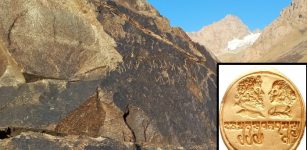Evidence Of The 586 BCE Babylonian Destruction Of Jerusalem’s Monumental Building – Reconstructed
Conny Waters - AncientPages.com - Researchers analyzed and reconstructed the destruction layer excavated within the rooms of a two-story building in Jerusalem that was occupied until the city's capture by the Babylonians in 586 BCE.
City of Jerusalem. Image source
This large structure, dated to the Iron Age II and named “Building 100,” was very large as it measured at least 10 × 17 m, making it one of the largest buildings from this period. Both its architectural style and unique finds suggest that members of Jerusalem's elite used the building.
Jerusalem has suffered several catastrophic political upheavals, however, the Babylonian campaign 586 BCE was one of the most crucial events in the history of the Southern Levant, and it “shaped the biblical narrative and theology for generations to come. “
“The widespread presence of charred remains suggests a deliberate destruction by fire, which was ignited at several locations in the top and bottom floors, with heat rising to burn the ceiling of the bottom floor. The rapid collapse of the structure probably hastened the suffocation,” the researchers wrote in their paper.
The team from Tel Aviv University, the Israel Antiquities Authority, and the Hebrew University of Jerusalem combined different methods for the study of fire and its effects on ancient built environments. As it was stated in the paper: “evidence in the debris of the building left no doubt regarding the presence of fire, but there was no visible indication as to whether it was intentional or accidental, and if intentional, where the fire started how it spread…”
Panoramic View over the Old City (Jerusalem). Image credit: 365grad - CC BY 3.0
The plan of Building 100 could not be fully reconstructed because the structure’s part extend below later remains that were not dismantled. Also, some other areas of the building were damaged by later construction.
The three rooms (A–C ) were excavated, and the pottery vessels found on the floors, showed the Building 100 went out of use at the end of the Iron Age, in the 586 BCE Babylonian destruction. All three rooms were filled with a thick layer of destruction debris, but the walls were found still standing intact to a height of ca. 2.5 m, according to the researchers. The presence of charred remains found in all three rooms clearly indicates that the destruction of Building 100 involved a large fire.
No pottery vessels were found on the floor in Room A, measuring 6 × 5 m. Rooms B and C are smaller, measuring ca. 3 × 5 m. Room B was filled with many collapsed construction stones and some architectural elements. The floor of the room was made of reddish-brown sediment. Unlike Room A, a layer of in situ pottery vessels, mostly of bowls and other small vessels, were discovered.
Many pottery vessels, mostly storage jars, were found stacked on the floor of Room C. Some of the storage jars were stamped with rosette stamp impressions, typical of the end of the Iron Age II. FTIR spectrometry and archaeomagnetic studies conducted within the ruined building showed varying degrees of exposure to fire in the three rooms of the bottom story of Building 100.
Interestingly, while the floor of Room C was exposed to high temperatures in certain areas (higher than 700 °C), the debris and floor in Room A and the floor in Room B show harder-to-interpret results.
Evidence recovered by the researchers enables to reconstruct the destruction of Jerusalem’s “Building 100,” that was occupied until the city's capture by the Babylonians in 586 BCE.
The meticulous study of the structure showed the widespread presence of charred remains that suggests “a deliberate destruction by fire, which was ignited at several locations in the top and bottom floors, with heat rising to burn the ceiling of the bottom floor…“
“The rapid collapse of the structure probably hastened the suffocation,” stated the paper.
The current excavation of the site has been led by Yuval Gadot (Tel Aviv University) and Yiftah Shalev (Israel Antiquities Authority) since 2017. Building 100 was excavated between 2017 and 2020.
Written by Conny Waters - AncientPages.com Staff Writer






















